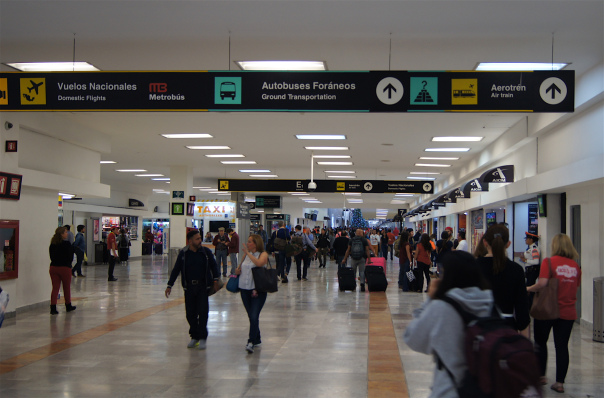Some private airport operators are resuming their pre-pandemic investment plans as Mexican passenger traffic is returning to growth. Passenger numbers had collapsed by more than 90% during the peak of lockdowns last year.
At least two of the country’s three largest private operators – Grupo Aeroportuario Centro Norte (OMA), Grupo Aeroportuario del Pacífico (GAP) and Grupo Aeroportuario del Sureste (Asur) – announced they intend to continue or start works defined in their master plans.
The three companies could position themselves as the most resilient in the sector last year, according to news site CEO.
Mexico has seen a faster recovery in flights than other countries in Latin America, according to reports. This trend could be attributed to the government’s decision to refrain from imposing too many air traffic restrictions and to keep the borders open.
Experts expect air passenger traffic returning to 2019 levels by 2023, although under some worst-case scenarios the recovery could take until 2025.

Grupo Aeroportuario Centro Norte
OMA announced that it is readying a 12bn-peso (US$611mn) investment plan for the next five years.
Half of that investment will go to the construction of a wing at Monterrey airport that serves the capital of Nuevo León state, CEO Ricardo Dueñas Espriú told daily El Economista.
The rest will be for the completion of airport modernization works at Torreón in Coahuila state and Ciudad Juárez, and Chihuahua’s airport, he said.
Monterrey airport is OMA’s busiest terminal. The group operates 13 airports in the country.
The CEO also said that the group is considering adding to its investment plans technologies such as facial recognition, electronic tickets and sanitation systems.
From January-September 2020, OMA’s revenues declined 40%, according to El Economista.

Grupo Aeroportuario del Pacífico
After announcing a delay to its five-year 24bn-peso investment plan in April, GAP said in December that it will resume plans for upgrading the 12 airports it operates in the country, CEO Raúl Revuelta told daily El Financiero.
Revuelta updated the original investment amount to 28bn pesos.
Revuelta said that the government, through the communications and transportations ministry (SCT), and the group agreed to not downgrade the investment plan in exchange for prolonging the construction period, meaning works under the master plan will take longer than the originally planned five years.
The works, mainly focusing on a new terminal and runway for Guadalajara airport and another terminal for Puerto Vallarta airport in Jalisco state, will take one year and eight months longer.
Guadalajara’s airport is set to receive 12bn pesos of the total investment, and construction for the second runway kicked off in October.
Other Operators

Asur, which operates nine airports in the southeast, has not disclosed plans, but financial reports suggest the operator suffered the biggest hit from the pandemic.
The region in which the group operates is expected to see a tourism boom in the next few years due to the Maya train, set to begin operations in 2023.
However, some experts think the president’s decision to award the contract for a new airport in Tulum, Quintana Roo state, could harm demand at the three terminals Asur controls in the Yucatán Peninsula.
Tourism board Fonatur is also persuading the operator to transfer the Mérida airport in Yucatán state closer to the Maya train station that will be built in the city. But plans have not been confirmed.
President Andrés Manuel López Obrador (AMLO) has said that the Maya train would require the modernization and even expansion of all surrounding airports.
Source: Banderas News


